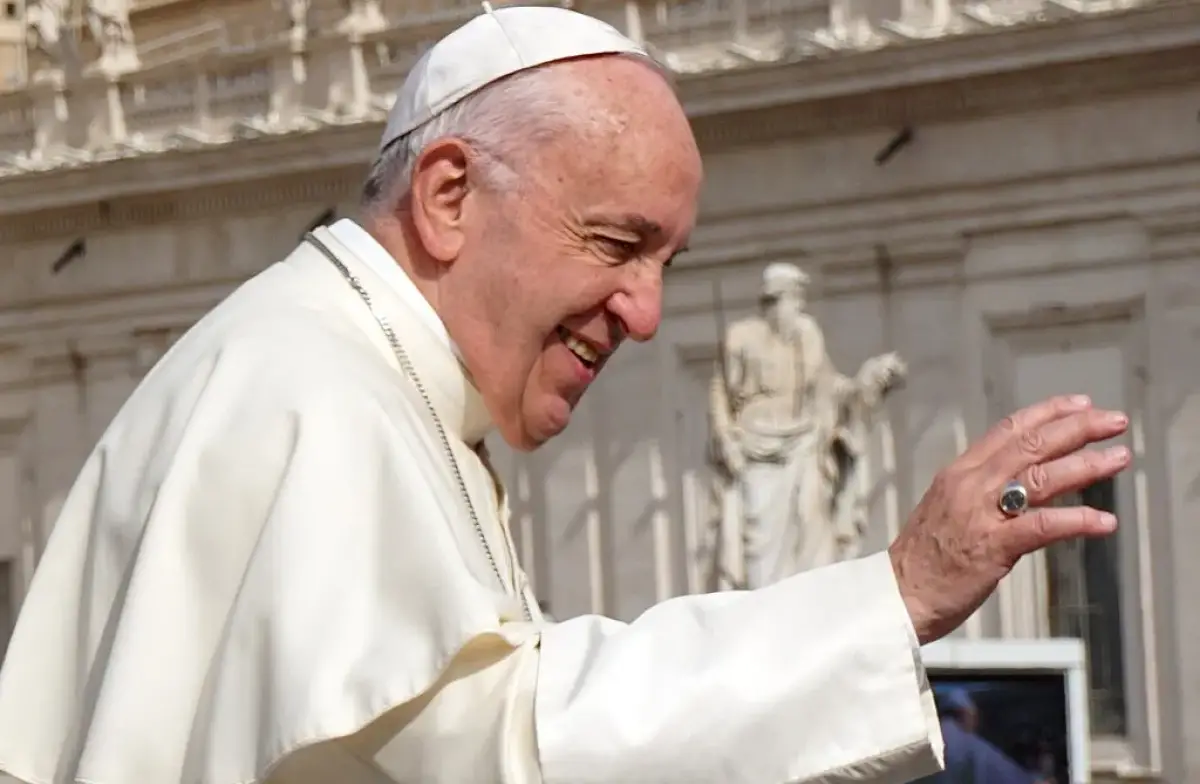The Passing of Pope Francis and a Glimpse into His Youth
The passing of Pope Francis on April 21, 2025, at the age of 88, brought the Catholic world into a period of mourning, marking the end of a papacy that redefined the role of the Church in the modern world. Known for his commitment to social justice, environmental issues, and interfaith dialogue, Pope Francis was a figure who transcended traditional papal norms. His passing, though deeply saddening, also led to a renewed interest in his past, particularly his early life and the relationships that shaped the man he became.
Among the many aspects of his youth, there is one woman whose name has been tied to the Pope’s early years: Amalia Damonte, a childhood acquaintance and, by some accounts, his first love. Though not much has been written about their relationship, Amalia’s story provides rare insight into a man who would one day rise to lead the Catholic Church.
I. The Story of Amalia Damonte: Pope Francis’ Childhood Friend
Pope Francis, born Jorge Mario Bergoglio, was raised in the Buenos Aires suburb of Flores. It was in this area that he met Amalia Damonte, a neighbor with whom he shared a brief but memorable childhood connection. While Pope Francis never openly discussed this chapter of his life, Amalia herself shared her recollections in a 2013 interview. In the interview, she reflected on the early days when the two were 12 years old, noting that Pope Francis had once written her a heartfelt note.
“I remember perfectly that he had drawn me a little white house, with a red roof, and it said, ‘This is what I’ll buy when we marry,’” Amalia recounted. The gesture, though innocent and childlike, became a source of family tension. Amalia’s parents were not pleased by the note, leading her father to discipline her and her mother to intervene directly. This led to a distance between the two children, with Amalia’s parents taking drastic steps to keep them apart.
Despite this early connection, Amalia dismissed the notion that their relationship was anything other than a childhood friendship. “In love?… I only knew love when I was much older,” she said, highlighting how, despite the romantic nature of Pope Francis’ gesture, there was no serious romantic relationship at play.

Amalia Damonte during an interview on March 15, 2013 | Source: YouTube/TheTelegraph
II. Pope Francis’ Vocations and the Impact of His Early Relationships
As Amalia Damonte pointed out, their childhood relationship was fleeting and did not extend into adulthood. However, she was taken aback when she learned that her childhood acquaintance had become the Pope. “I froze in front of the television,” Amalia admitted. “I couldn’t believe that Jorge was the Pope.” She described him as a wonderful person, someone she had always respected for his humility and honor. Yet, she emphasized that she had remained out of contact with him throughout his rise within the Church, and had followed his journey from a distance.
In their brief conversations during childhood, Jorge Mario Bergoglio had expressed an interest in a different path—one that eventually led him to the priesthood. Amalia recalled him telling her, “If I can’t marry you, I’ll become a priest.” Though it was said in jest, this declaration foreshadowed the life of sacrifice and service that Pope Francis would embrace.

Amalia Damonte pictured during an interview on March 15, 2013 | Source: YouTube/TheTelegraph
For many years, his early decision to join the priesthood came in the wake of a personal sacrifice—his unrequited love for Amalia Damonte. While she ultimately moved on, married, and started a family, Bergoglio’s commitment to a religious life was unshaken. His eventual rise to the papacy was not part of his early aspirations, but instead, as his sister María Elena Bergoglio noted, “a blessing from God.” Pope Francis’ role as pope was not something he had ever actively sought, and the position seemed to come as a surprise even to him.
III. The Legacy of Pope Francis and His Lasting Impact
Throughout his papacy, Pope Francis remained dedicated to serving the poor, fostering interfaith dialogue, and advocating for environmental sustainability. His humility and commitment to social justice became key pillars of his leadership. He is widely credited with reshaping the Church’s approach to global issues and making it more inclusive, more attuned to the needs of the marginalized, and more focused on compassion.
But in exploring Pope Francis’ past, one cannot help but wonder how different his life—and the Church’s history—might have been had his early love for Amalia Damonte led him down a different path. Nonetheless, Pope Francis was unwavering in his commitment to his faith and ultimately chose to serve the Church with the same sense of purpose and compassion that marked his early years.
As his health began to decline, especially in his final years, Pope Francis had taken measures to plan for his legacy. Unlike many of his predecessors, he expressed a desire to be buried at St. Mary Major Basilica in Rome, not in St. Peter’s Basilica. This marked a departure from tradition but spoke to his personal devotion to the Church and his deep connection to the people of Rome, particularly the Salus Populi Romani icon, which he often visited. His humility continued to define him, even in the final decisions of his life.
IV. The Final Chapter: Pope Francis’ Health Struggles and Last Wishes
Pope Francis had long dealt with health issues, including respiratory infections and gastrointestinal conditions. His most recent battle with double pneumonia and a mild renal insufficiency in early 2025 caused deep concern, especially given his advanced age. Despite these challenges, the Pope remained engaged with the public, sending messages of gratitude and participating in Mass when his condition allowed. His struggle with health, particularly respiratory difficulties, had been ongoing for several years, but he faced each obstacle with grace and faith.
His decision to be buried in St. Mary Major was symbolic of his deeply personal connection to his faith and his humble nature. For a man who had chosen simplicity and service over grandeur, this final wish reflected his consistent approach to life—focused on spiritual rather than material wealth.
V. Conclusion: Pope Francis’ Enduring Legacy and the Lessons He Leaves Behind
Pope Francis’ death marks the end of a transformative era in the Catholic Church. His emphasis on social justice, environmental responsibility, and ecumenical outreach has left an indelible mark on Catholic doctrine and practice. His leadership was defined by humility, compassion, and service to the poor. But as we reflect on his journey, we also gain rare glimpses into his personal history, including his early life and the relationships that helped shape him.
The story of Amalia Damonte, the childhood acquaintance he once loved, is a reminder that Pope Francis was not always the global figure we know today. He was once a young man with dreams and emotions, navigating love and sacrifice. His journey to the papacy was a reflection of his deep commitment to faith, a commitment that transcended personal desires.
As the world mourns his passing, Pope Francis’s legacy continues to inspire millions. His life and work serve as a reminder of the importance of compassion, mercy, and justice—values that will continue to guide the Catholic Church for generations to come.

